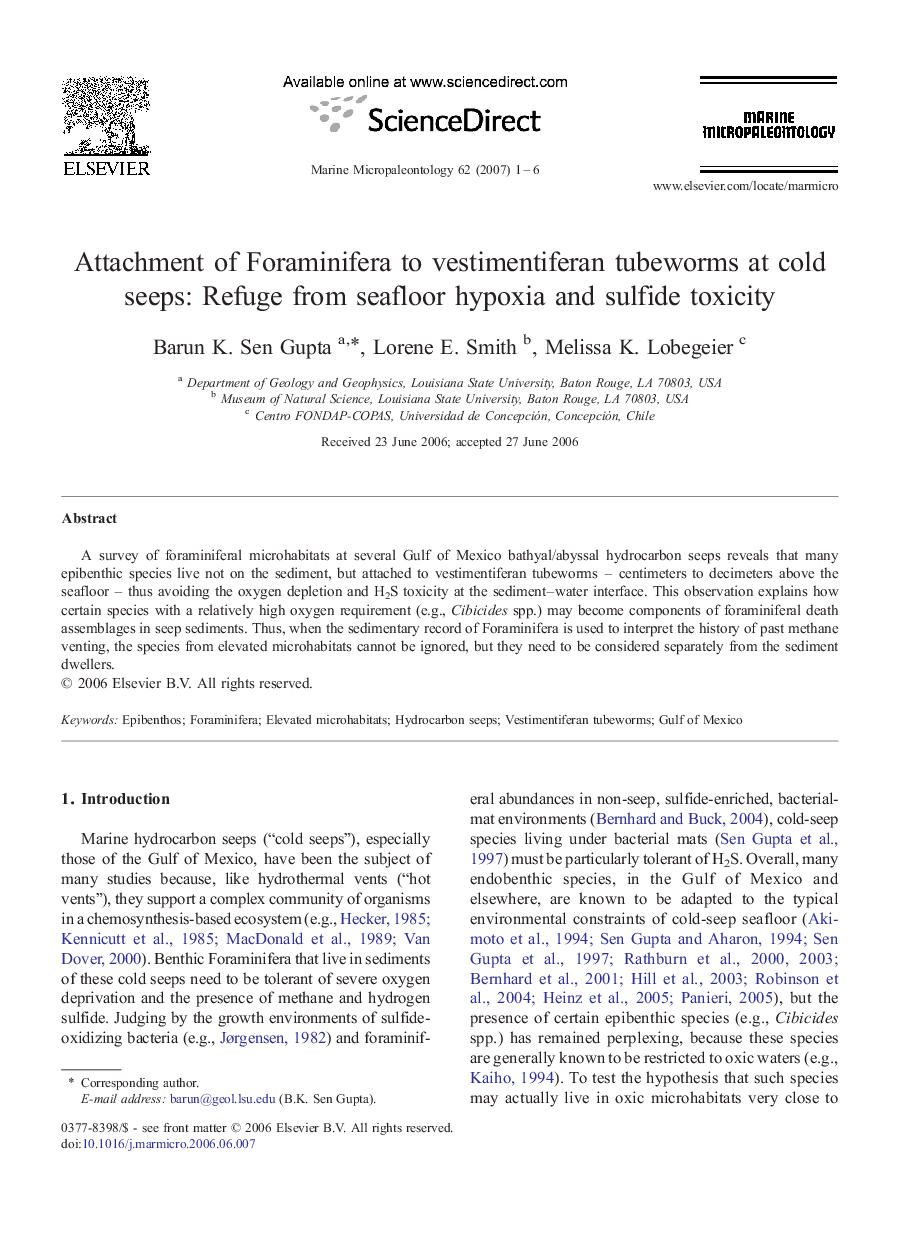| Article ID | Journal | Published Year | Pages | File Type |
|---|---|---|---|---|
| 4749492 | Marine Micropaleontology | 2007 | 6 Pages |
A survey of foraminiferal microhabitats at several Gulf of Mexico bathyal/abyssal hydrocarbon seeps reveals that many epibenthic species live not on the sediment, but attached to vestimentiferan tubeworms – centimeters to decimeters above the seafloor – thus avoiding the oxygen depletion and H2S toxicity at the sediment–water interface. This observation explains how certain species with a relatively high oxygen requirement (e.g., Cibicides spp.) may become components of foraminiferal death assemblages in seep sediments. Thus, when the sedimentary record of Foraminifera is used to interpret the history of past methane venting, the species from elevated microhabitats cannot be ignored, but they need to be considered separately from the sediment dwellers.
